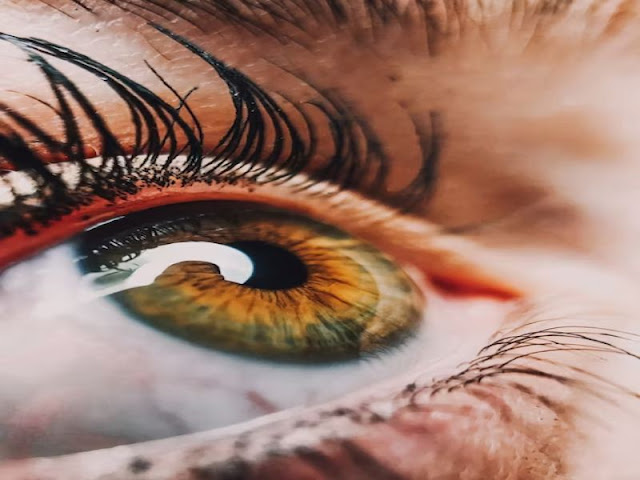practical tips for eye care

Eye care is a critical aspect of overall health and well-being. Our eyes are not only essential for experiencing the world around us but are also sensitive organs that require special attention and care. In this comprehensive guide, we will explore the importance of eye care, common eye problems, and practical tips for maintaining healthy vision throughout your life.
The Importance of Eye Care
- Vision
Clarity: Proper eye care ensures optimal vision clarity, allowing you
to see and experience the world in all its beauty. Regular eye check-ups
can detect vision problems early and provide necessary corrections.
- Quality
of Life: Healthy vision significantly contributes to your quality of
life. It allows you to read, work, drive, and enjoy recreational
activities comfortably. Vision impairment can have a profound impact on
daily living.
- Preventing
Eye Diseases: Routine eye care can detect and address eye diseases and
conditions such as glaucoma, cataracts, diabetic retinopathy, and macular
degeneration. Early diagnosis and treatment can often prevent or delay
vision loss.
- Reducing
Eye Strain: Many people spend hours in front of screens, which can
lead to digital eye strain, also known as computer vision syndrome. Proper
eye care practices can alleviate this strain and discomfort.
- Healthy
Aging: As you age, the risk of eye-related conditions increases.
Regular eye check-ups are crucial for maintaining good vision and overall
eye health as you get older.
Common Eye Problems
- Myopia
(Nearsightedness): Individuals with myopia have difficulty seeing
distant objects clearly. This condition often begins in childhood and may
worsen with age.
- Hyperopia
(Farsightedness): Hyperopia causes difficulty in focusing on nearby
objects. It is typically present from birth but may become more noticeable
as you age.
- Presbyopia:
An age-related condition, presbyopia makes it challenging to focus on
close objects, especially when reading. It usually becomes noticeable in
your early 40s.
- Astigmatism:
Astigmatism occurs when the cornea or lens has an irregular shape, leading
to distorted or blurred vision at all distances.
- Cataracts:
Cataracts are the clouding of the eye's natural lens, leading to blurry or
dim vision. They often develop with age.
- Glaucoma:
Glaucoma is a group of eye diseases that damage the optic nerve, often due
to increased intraocular pressure. It can lead to irreversible vision loss
if not managed.
- Diabetic
Retinopathy: Diabetic retinopathy is a complication of diabetes that
affects the blood vessels in the retina. It can lead to vision impairment
or blindness.
- Macular
Degeneration: Age-related macular degeneration (AMD) affects the
macula, the central part of the retina. It can lead to the loss of central
vision.
Practical Tips for Eye Care
- Regular
Eye Exams:
Schedule regular comprehensive eye exams with an optometrist
or ophthalmologist. These professionals can detect vision problems, eye
diseases, and other conditions early, allowing for timely treatment.
- Healthy
Diet:
Maintain a balanced diet rich in antioxidants, vitamins, and
minerals. Foods like leafy greens, fish, nuts, and colorful fruits and
vegetables support eye health.
- Stay
Hydrated:
Proper hydration is essential for overall health, including
eye health. Drink plenty of water to maintain the moisture levels in your eyes.
- Eye
Protection:
Wear protective eyewear, such as safety glasses or goggles,
when participating in activities that pose a risk to your eyes, such as sports,
DIY projects, or yard work.
- Reduce
Screen Time:
Limit the amount of time spent in front of digital screens,
and follow the 20-20-20 rule: every 20 minutes, look at something 20 feet away
for at least 20 seconds to reduce eye strain.
- Proper
Lighting:
Ensure good lighting when reading or working on screens to
reduce eye strain. Avoid glare and position your screen at eye level.
- Blink
Regularly:
Blink frequently to moisten your eyes, especially when using
digital devices. Reduced blinking can contribute to dry eye syndrome.
- UV
Protection:
Wear sunglasses that provide 100% UV protection when
outdoors to shield your eyes from harmful ultraviolet rays.
- Quit
Smoking:
Smoking is linked to an increased risk of cataracts, macular
degeneration, and other eye diseases. Quitting smoking can benefit your eye
health.
- Manage
Chronic Conditions:
If you have conditions like diabetes or hypertension, manage
them effectively to reduce the risk of diabetic retinopathy and other eye
complications.
- Regular
Exercise:
Physical activity supports overall health, including eye
health. Aim for regular exercise to improve blood circulation and reduce the
risk of eye conditions.
- Proper
Contact Lens Care:
If you wear contact lenses, follow your eye care professional's instructions for cleaning and wearing them. Improper contact lens care can lead to eye infections. Conclusion
Caring for your eyes is a vital aspect of maintaining a high
quality of life. Healthy vision enhances your daily experiences and allows you
to enjoy the world around you. By adopting good eye care practices, including
regular eye exams, a balanced diet, protective measures, and lifestyle
adjustments, you can help preserve your vision and reduce the risk of eye
diseases. Remember that early detection and timely treatment play a crucial
role in maintaining optimal eye health, so prioritize regular eye check-ups and
seek professional guidance if you experience any vision concerns or discomfort.


